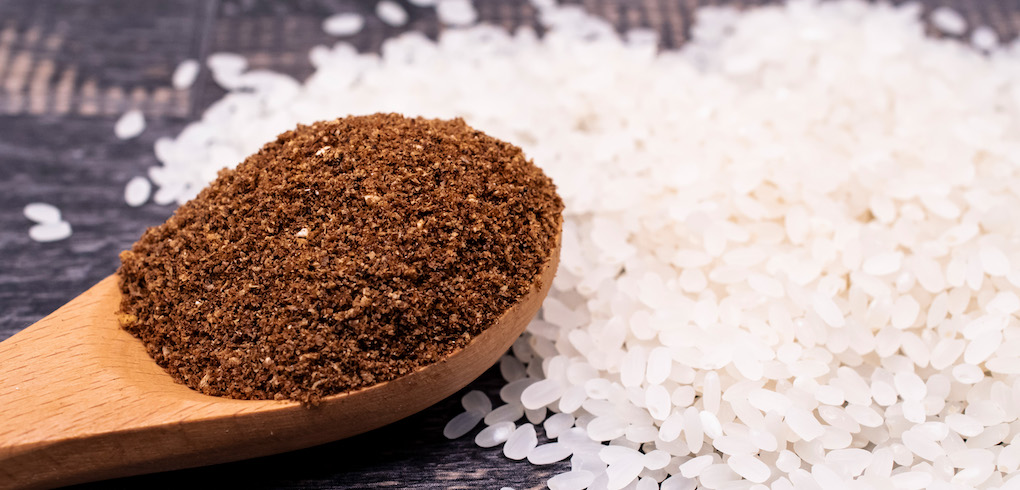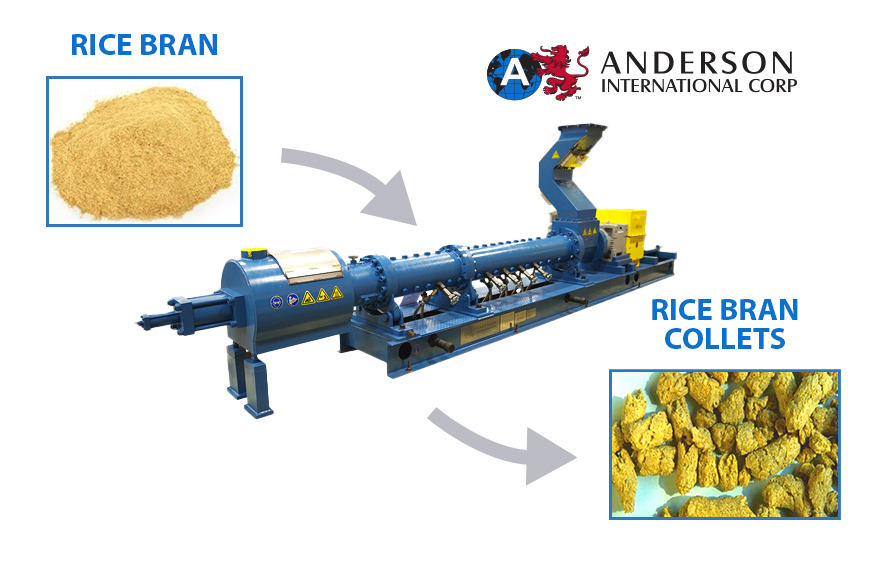
Rice is a significant food source for almost half of the global population. While the processing of the grain to produce the edible brown, white, or polished rice is generally uncomplicated, the processing of the bran – or the outer layer of the brown rice where most of the fat and nutrients are stored – to extract its valuable fat is less straightforward.
The size and structure of rice bran particles present challenges that make it difficult to extract with traditional processing methods. Instead, certain steps must be taken to stabilize the bran before processing to ensure a high yield and good quality oil product.
By identifying and eliminating the major bran processing challenges discussed below, here’s how operators can capitalize on the true commercial value of rice bran oil.
Problems processing rice bran oil
The challenges associated with processing rice bran make it nearly impossible to extract good quality oil using standard techniques. Since the quality of the oil depends directly on the processing methods, it’s imperative to understand the problems inherent to rice bran oil preparation.
Traditional mills physically grind off, or polish, the outer surface of hulled brown rice to separate the bran and germ from the white rice kernels. This process generates frictional heat, which activates a lipolytic enzyme in the rice bran. This enzyme breaks down lipids into free fatty acids, rapidly deteriorating the oil in the bran and causing it to turn rancid.
In as little as two or three days, this deterioration can ruin up to 10% of the oil concentrated in the rice bran. After three months, untreated enzymes can destroy as much as 70% of the oil. That’s why it’s critical for millers to either extract the bran immediately or find a way to stop the enzymatic action quickly by creating a stabilized rice bran.
Another major bran oil processing issue is the fine physical nature of the bran, which poses problems throughout several phases and methods of solvent extraction. For example:
- During percolation, these fine particles tend to channel and bind within the extractor baskets.
- In total submergence extraction, fine bran can severely limit the processing capacity and reduce a plant’s operational efficiency.
- The miscella that forms when a solvent like hexane binds to oil during extraction is extremely difficult to clarify—requiring multiple washes to remove the solvent from the finished product.
These challenges force many operators to run their plants at decreased capacity and prevent others from processing any rice bran at all.
Stabilized rice bran solutions
To combat these production challenges, Anderson International designed a patented process for stabilizing rice bran using its Solvex™ Expander. The Solvex deactivates the lipolytic enzymes in the rice bran to prohibit deterioration immediately after polishing, while compacting the fine bran particles into porous clusters—eliminating solvent extraction problems down the road.
Here’s a closer look at how the Anderson Solvex process works:
- First, the Solvex Expander cooks the rice bran in a high-pressure machine that maintains a constant elevated temperature.
- Instead of generating heat through friction, the Solvex adds water and steam to raise the moisture level of the bran, which makes the heat transfer more effective. The controlled heat destroys the lipolytic enzymes in the rice bran without destroying the valuable fat.
- During cooking, the bran particles gelatinize into a fluid paste, which binds the particles together and molds the bran into a compacted pellet.
- As the wet bran pellet exits the Expander, the sudden drop in pressure causes the water to quickly vaporize, forming dense yet porous collets that are well-suited for solvent extraction.
- Additional drying time prevents further deterioration from elevated moisture levels in the expanded rice bran, while hardening the particles to prepare for solvent extraction.
At the end of this process, the dried expanded bran can be extracted at the mill or shipped to a solvent extraction plant. Since this process destroys the lipolytic enzymes to create a stabilized rice bran, the material can be stored for several months or more, with no concerns of fats breaking down and turning rancid. For operators who can’t extract rice oil immediately after milling, this expansion process can significantly maximize the profit potential of rice bran.

Also read: How an Expander Maximizes Oil Recovery in Solvent Extraction
Benefits
By using an expander like the Anderson Solvex to stabilize rice bran during processing, operators can unlock several key benefits to improve solvent extraction. These benefits include:
- Improved efficiency. Since steam-generated heat is more effective than friction, the expander operates more efficiently. Because the Solvex compresses bran material, it allows for up to 50% more capacity in the extractor—which means decreased operational costs.
- Reduced solvent exposure. The porous collets formed by the expander allow solvent to flow faster during extraction to dissolve the fat more quickly. This reduces the amount of solvent required, saving processors from costly expenses.
- Increased yield. As a result of the expansion process, rice bran visibly increases in size with fewer fine particles that could cause issues during extraction. This improves the yield of rice oil recovery, leaving less than 1% residual oil behind.
By compacting the tiny troublesome particles and deactivating the enzymes that make rice bran so difficult to process, the Anderson Solvex Expander makes the solvent extraction of stabilized rice bran oil more practical and economical. With capacities ranging from 200-3,000 metric tons per day, the Solvex empowers operators to convert rice bran from a previously difficult product into a profitable source of oil.
Ready to maximize your rice bran profit potential? Contact Anderson today to learn more about the Solvex Expander.